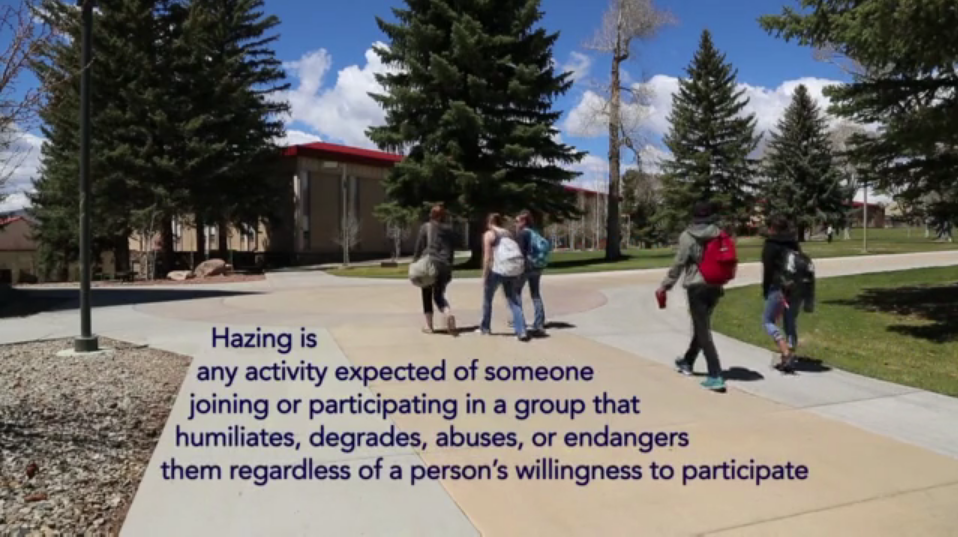| “We Don’t Haze” Documentary an Important Tool for Campus Safety Professionals |
|
October 26, 2018 "We Don't Haze" Documentary an Important Tool for Campus Safety Professionals
Over the past decade, college campus hazing incidents have gained national attention and, understandably, national concern. As the federal government has yet to define hazing as a crime, legal response to hazing incidents varies state by state. Read on for more information about steps you can take to engage your campus community in hazing prevention. Hazing and the Clery ActCurrently, the Clery Act does not include hazing as a crime; however, Clery Center supports efforts to standardize the definition of hazing at the federal level. One suggestion amongst others is the REACH Act (Report and Educate About Campus Hazing Act), proposed legislation that would define hazing and require campuses to maintain statistics on and develop prevention programs for hazing. Nonetheless, Clery Center recognizes the devastating impact of hazing incidents on students, families and campuses, and we’ve worked with StopHazing and Dr. Elizabeth Allan to develop educational resources and tools you may find useful. Recognizing the need for more education on this issue, in 2016 Clery Center partnered with StopHazing and developed We Don’t Haze, a free 17-minute documentary that promotes hazing prevention on college campuses. The documentary shares the perspectives of students, family members, and professionals whose lives have been impacted by hazing, and touches on key themes in hazing prevention such as examples of hazing, how to recognize hazing behaviors, and alternatives to hazing. In partnership with StopHazing, we also developed the Hazing Prevention Toolkit for Campus Professionals®, prevention briefs for both higher education professionals and general audiences, an activity guide for students, faculty, and staff, a bystander intervention guide, and discussion guides for both students and faculty and staff. All of these resources, as well as a link to the documentary, are available on the Hazing Initiative page on our website. We Don’t Haze: The ImpactIn collaboration with Clery Center, StopHazing has conducted an evaluation of We Don’t Haze. Findings gleaned from more than 200 college students in campus organizations who watched the film point to its promise as a tool for education and prevention. For example, students who view We Don’t Haze are more likely than their peers to agree that:
Student feedback has consistently indicated that We Don’t Haze is a powerful film featuring stories, individuals and imagery that resonate with a college-age audience. As one student stated, “The real-life experiences that were shown in the film … brought so much perspective and light to what a horrendous thing hazing really is.” How Can Campus Safety Professionals Use the Documentary?Campus safety professionals can utilize the We Don’t Haze discussion guide when initiating conversations with students on topics such as the definition of hazing, the difference between hazing and bullying, why individuals can’t give true consent to be hazed, and characteristics of hazing and non-hazing activities. Safety officials are supported by the Clery Act, which requires colleges and universities to report campus crime data, support victims of violence and outline policies and procedures they’ve put in place to improve campus safety. In keeping with the Clery Act, colleges and universities that receive federal funding must distribute a public annual security report that includes school policy on crime reporting, campus facility security, incidence of alcohol and drug use, and the prevention of sexual assault and stalking. Many of the actions the Clery Act requires — providing mechanisms to report crimes, describing available crime prevention and security awareness programs, and collecting and classifying crime data in other areas — indirectly support hazing prevention efforts. If some elements of sexual assault or stalking were present in a hazing incident, for example, the Clery Act requirements would address those concerns. While the Clery Act does not require institutions to report on or establish prevention programming and response procedures for hazing incidents currently, these are areas proposed under the REACH Act. The REACH Act provides a requirement for education and transparency regarding policy and incidents on campus specific to hazing. The establishment of a universal definition will help us to truly understand the prevalence of hazing on college and university campuses. If you’re a campus security official, student or community member who would like to get more information on We Don’t Haze, the facilitation guide and other companion resources related to the film, please visit our website or stophazing.org. If you’re interested in learning more about how We Don’t Haze can be implemented on your campus, please contact [email protected]. |



